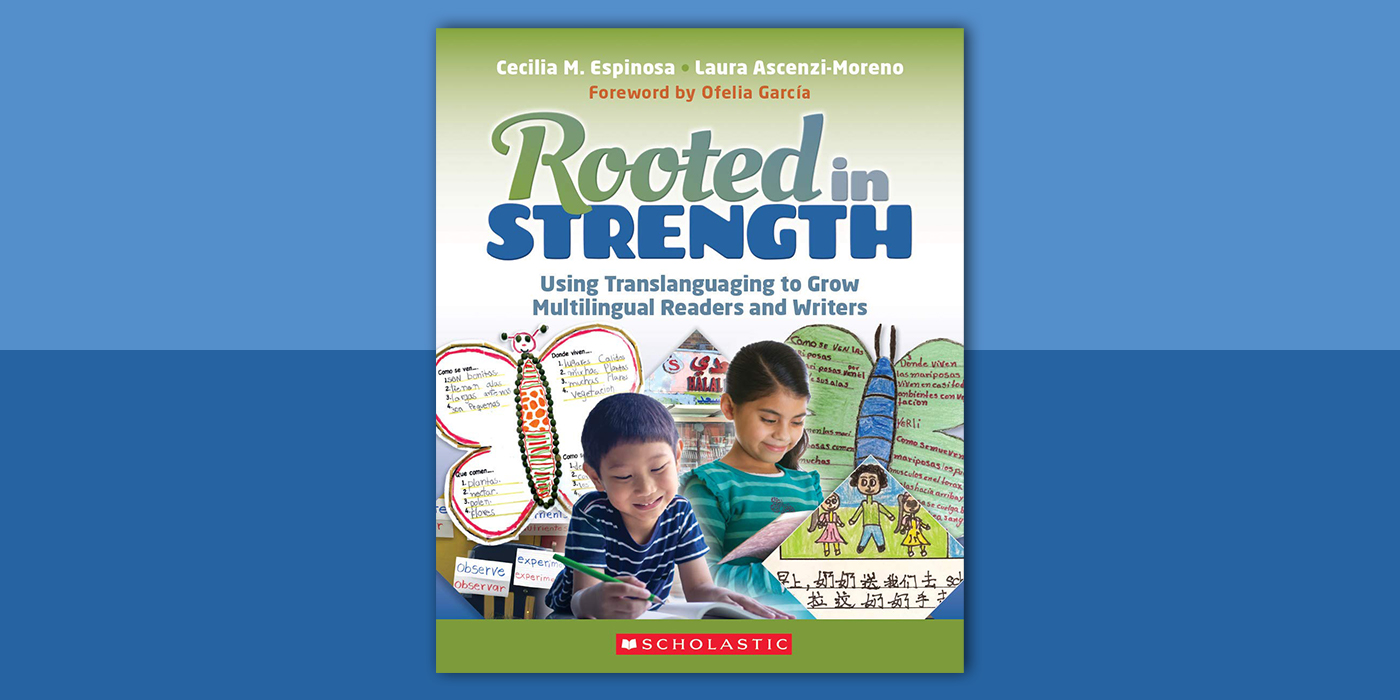When we were new teachers, we looked for strategies to engage students who used two or more languages in their daily lives in rich, thoughtful literacy practices. After years of working as bilingual teachers and university professors, we concluded that when assisting multilingual learners in their journeys to becoming confident and capable learners, instructional strategies cannot stand alone.
Instead, all pedagogy needs to be rooted in one guiding principle: Multilingual students’ full participation as readers and writers is fundamental to any classroom where students engage in literacy.
Rooting Instruction in Students’ Strengths
In our book, Rooted in Strength: Using Translanguaging to Grow Multilingual Readers and Writers, we advocate and offer a vision for the education of multilingual learners. Our vision is guided by translanguaging, an approach that invites students to fully engage in literacy by using their entire linguistic and sociocultural repertoires. This book will support all teachers—those who work in monolingual, English as a new language, and bilingual settings—to implement powerful literacy practices informed by translanguaging.
We show you how to support multilingual learners to become confident readers and writers, not only in the way you teach them, but also in the way you think about them and how they learn through language. We introduce tools for transforming your reading and writing instruction, while helping you to support these students through leveraging the resources they bring to school. In essence, we help you root your instruction in your students’ strengths.
Integrating Translanguaging Into Literacy Instruction
There is not one way to integrate translanguaging into your instruction. It can happen throughout the day and can include all modes of language and expression (such as reading, listening, speaking, writing, viewing, gestures, audio recordings, images, and so on).
Translanguaging can happen when a student reads a text quietly and makes notes. It can happen when a student talks with another student, when you talk to the class, or when students talk with one another. It can also happen when a student writes for a particular audience—for example, a presentation to a group of parents or a thank you letter to a presenter.
Here are just a few examples of strategies teachers use to engage multilingual learners:
- pairing students based on language background to tackle a number of literacy tasks, thereby increasing their ability to process information swiftly in their home language
- inviting students to annotate a text they’ll read in English using their home language(s). For instance, they can paraphrase, write a question, or state a connection in the language in which they are processing the material.
- reviewing a concept in your students’ home language or ask a student to translate an idea for the class.
How to Explore Translanguaging in Your Classroom
Translanguaging is a potent tool for constructing meaning, thinking, authentic communication, and expression; it is not simply a scaffold to support students who are not yet fluent in English. It allows your students to capitalize on their linguistic repertoire without rigid language boundaries.
For multilingual learners, translanguaging is the norm. It is therefore critical to center the teaching of literacy on students’ strengths by intentionally and purposefully planning for translanguaging. The first step in this journey is to reflect on your own language practices. These steps, featured in our book, offer a guide for exploring translanguaging in your own classroom.
- Spend time in a classroom during literacy time and observe opportunities for translanguaging. If you are a classroom teacher, think about your own classroom.
- What do you notice about the ways in which the teacher acknowledges and works from the children’s diverse linguistic repertoires?
- In what ways does the teacher ensure that all the children understand what is being taught?
- How are directions provided? How is the particular content delivered? What languages are used throughout the lesson?
- Observe the children working at their seats. What kinds of interactions take place?
- What would it be like for a student who is new to English to be in this classroom?
- What recommendations would you make to shift this classroom environment to a place where translanguaging is utilized to construct meaning?
- Take some notes and, if possible, share with a colleague.
To learn more about how to integrate translanguaging in your classroom, you can purchase our book here.
